The College Key
The College Key is a 501(c)(3) that:
- provides student aid including scholarships and other kinds of financial assistance
- recognizes outstanding Bates students and faculty
- supports academics, student life, and campus improvements
- encourages and recognizes student academic and extracurricular achievement
- contributes to the general welfare of the college
Members of the College Key include seniors and a small number of juniors who are elected to the Key by virtue of their leadership in academic and extra-curricular work. Alumni are elected each year as well, by virtue of their volunteer work for the college.
The College Key is proud to include such Bates luminaries as the late former Secretary of State Ed Muskie ’36, Professor Marcus Bruce ’77, novelist Lisa Genova ’92, poet Elizabeth Hobbs ’51, and television journalist Bryant Gumbel ’70.
Committees
Executive Committee
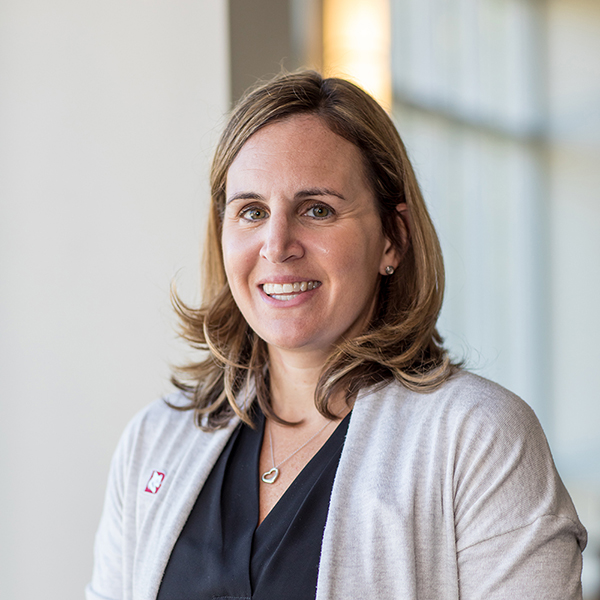 | Jen Crawford ’01 President Boston, MA 774-249-3909 jencrawf@gmail.com |
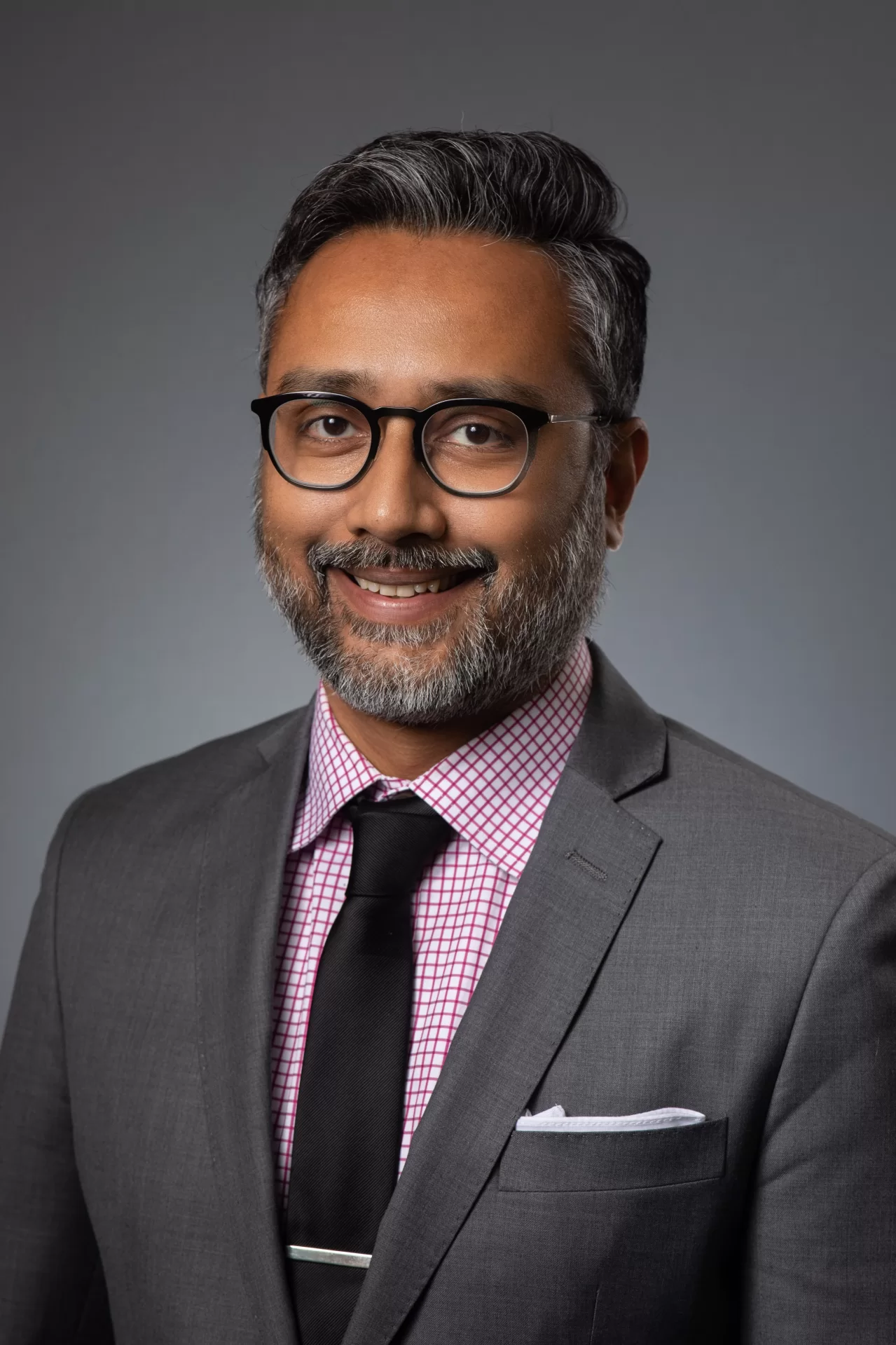 | Tahsin I. Alam ’04 Vice President Seattle, WA 617-851-8588 tahsinjr@gmail.com |
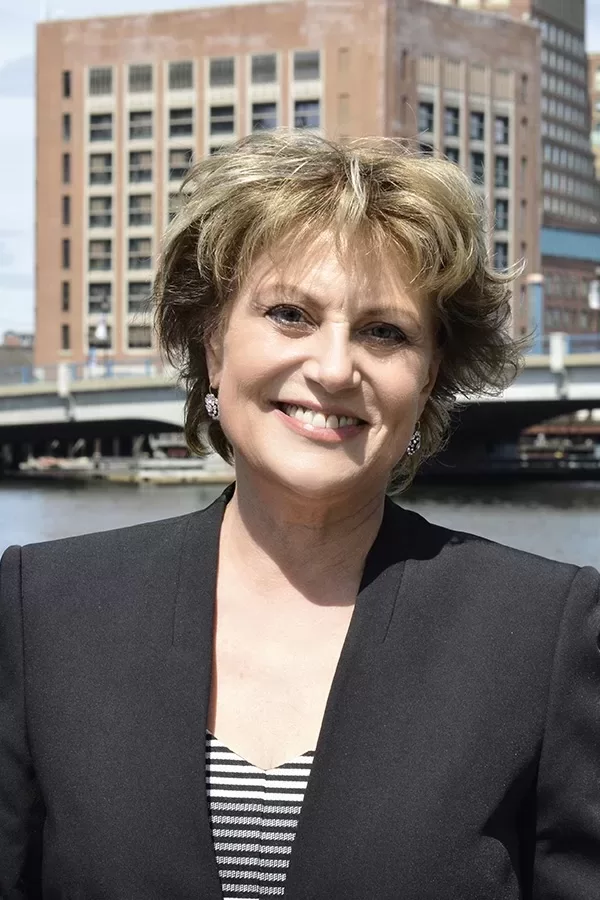 | Susan Peillet Yule ’78 Treasurer West Newton, MA 617-413-3756 spyule007@gmail.com |
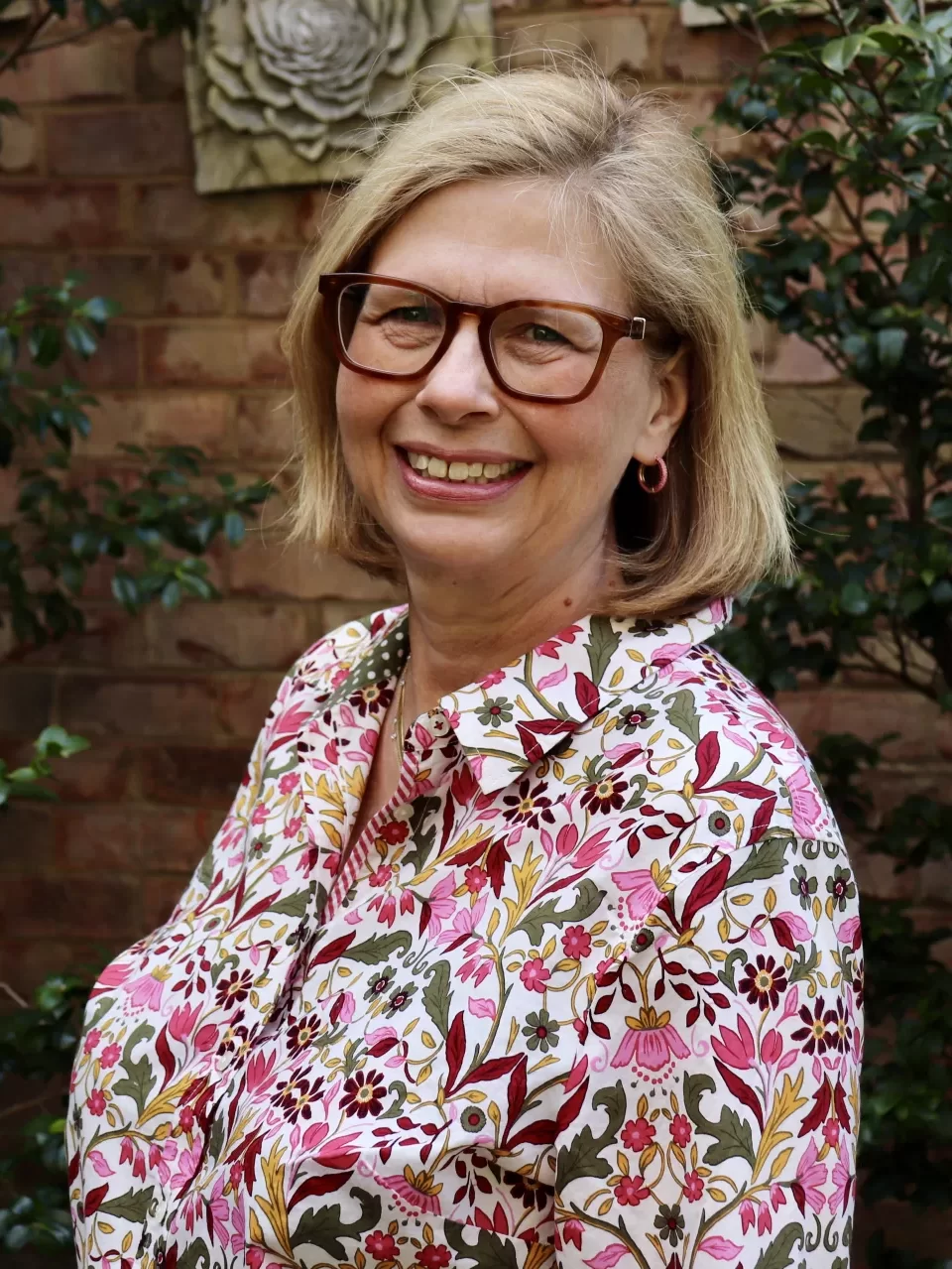 | Pamela Batchelder Johnson ’91 Secretary Charlotte, NC 704-968-5354 pbjrhj@gmail.com |
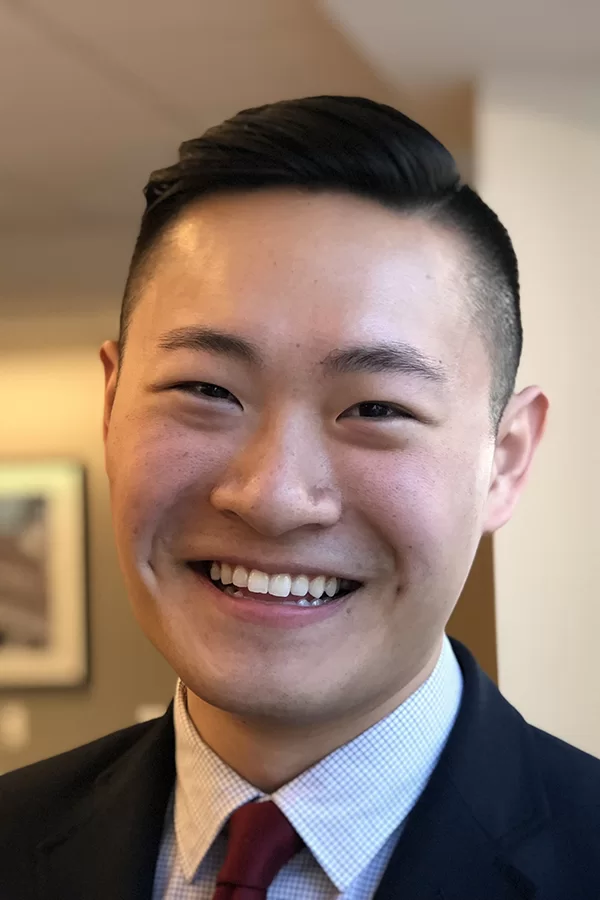 | Henry T. Geng ’13 Past President Carlsbad, CA |
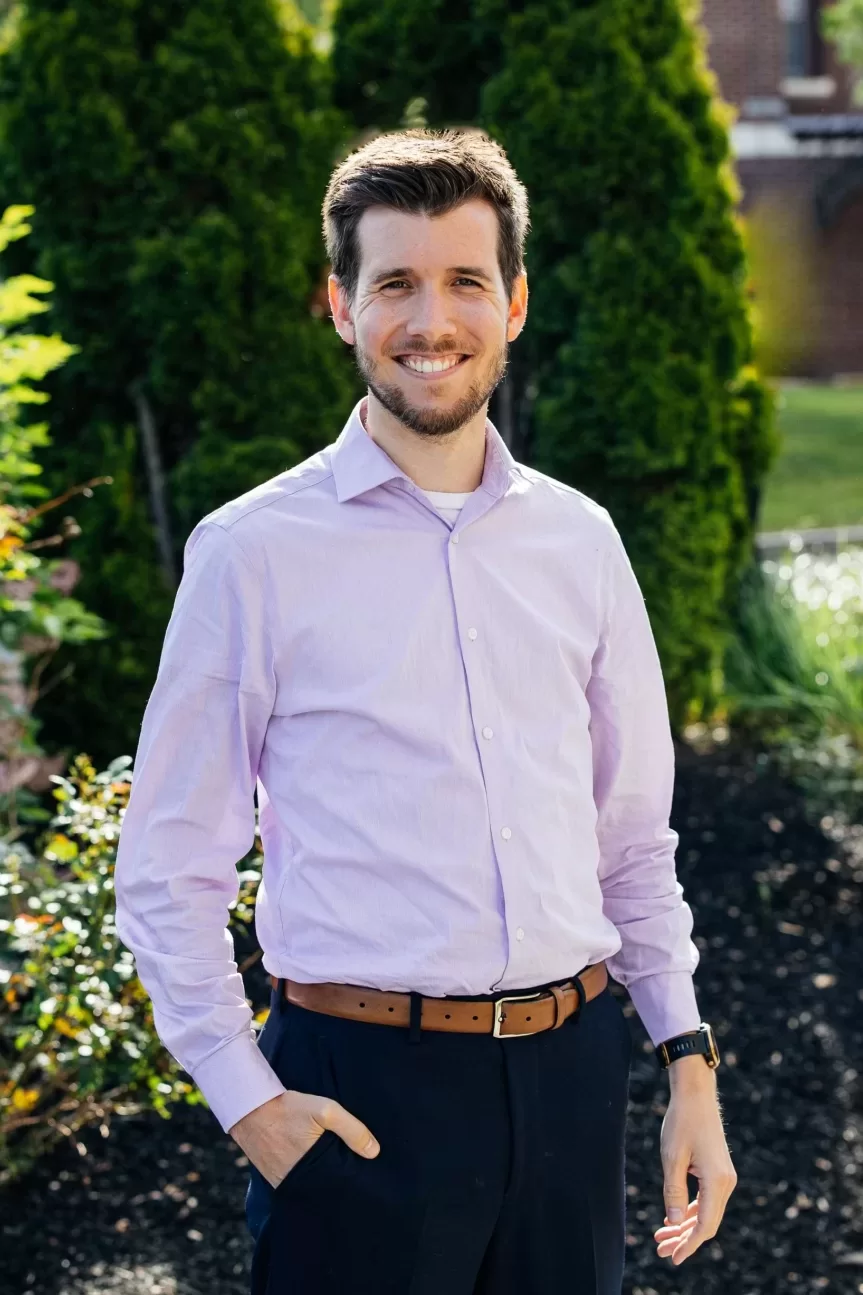 | Justin Fortier Staff Liaison 207-786-8372 jfortier@bates.edu |
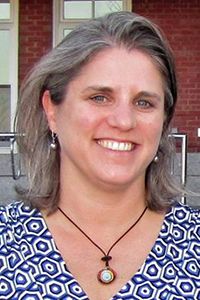 | Marianne Nolan Cowan ’92 Advisor Lewiston, ME 207-786-6128 mcowan@bates.edu |
Alumni Committee
- Gretchen Shorter Davis ’61
- Sally Ehrenfried ’89
- Teddy Rube ’16
- Flora Rice-Chan ’11
Nominating Committee
- Linda Kugblenu ’13
Scholarship & Programs Committee
- Betsy Campbell ’99
- Donelle Durham ’09
- Robin Hodgskin ’76
Undergraduate Committee
- Marianne Nolan Cowan ’92
- Carly Hopkins
- Dean James Reese
- Molly Newton ’11
Historical Leadership
College Key Presidents
2020-23 Karen Finnochio ’92
2016-19 Jeffrey D. Sturgis ’69, P’93
2015 Kristin Barber ’07
2012-15 Liam Leduc Clarke ’98
2009-12 Lisa Romeo ’88
2006-09 Roland Davis ’92
2003-06 Heather Chichester Pettis ’97
2001-03 Stuart Abelson ’97
1999-01 Melissa J. Weisstuch ’82
1997-99 Henri J. Sans ’73
1995-97 Leigh Graham ’82
1993-95 Grant C. Reynolds ’57
1992-93 Martha Lindholm Lentz ’64
Bates Key Presidents
1991-92 Rebecca Swanson Conrad ’82
1988-91 Barbara Varney Randall ’46
1984-88 Janice Upham ’62
1978-84 Mary Rogers Barnard ’56
1973-78 Barbara Leadbetter Fitzherbert ’35 ‡
1968-73 Marion Welsch Spear ’38
1961-68 Jane Ault Lindholm ’37
1936-61 Mabel Eaton ’10 ‡
‡ deceased
College Club Presidents
1991-92 J. Gregory Shea ’64
1989-91 Allen Harvie ’65
1987-89 William Farrington ’66
1985-87 Peter B. Post ’58
1983-85 Gerald A. Feld ’60
1981-83 Eugene G. Taylor ’56
1979-81 Ted M. Beal ’64
1978-79 Donald M. Russell ’51
1977-78 John J. DeGange ’59
1976-77 David O. Boone ’62
1975-76 Charles F. Toomey ’35 ‡
1974-75 Lynn W. Willsey ’54
1973-74 Frank O. Stred ’53 ‡
1972-73 Robert V. Dunn ’56
1971-72 William D. Crosby ’39 ‡
1970-71 Arthur B. Bradbury ’49
1969-70 John W. Hutchinson ’35 ‡
1968-69 Alan C. Goddard ’53 ‡
1967-68 Joseph A.Underhill ’17 ‡
1966-67 E. Robert Kinney ’39 ‡
1965-66 Donald P. Richter ‘46
1964-65 Bernard R. Marcus ’37 ‡
1963-64 George V. Mandall ’35 ‡
1962-63 Henry L. Lavallee ’33 ‡
1961-62 Donald C. Gautier ’36 ‡
1960-61 Frederick B. Pettengill ’31 ‡
1959-60 John L. Buddington ’30 ‡
1958-59 R. Lee Waterman ’26 ‡
1957-58 Parker Mann ’32 ‡
1956-57 Frederick W. Downing ’40
1955-56 Harold B. Clifford ’16 ‡
1954-55 Norman J. Temple ’44 ‡
1953-54 RandolphA. Weatherbee ’32 ‡
1952-53 Richard F. Garland ’18 ‡
1951-52 Roy U. Sinclair ’26 ‡
1950-51 Edmund S. Muskie ’36 ‡
1949-50 Leverett H. Cutten ’04 ‡
1948-49 Charles H. Abbott ’12 ‡
1947-48 Ralph L. Kendall ’06 ‡
1946-47 Fletcher L. Shea ’27 ‡
1945-46 Raymond D. Stillman ’16 ‡
1944-45 Arthur W. Sager ’26 ‡
1943-44 Frank W. Rounds ’04 ‡
1942-43 A. Allison Wills, Jr. ’27 ‡
1941-42 Leo W. Blaisdell ’12 ‡
1940-41 John L. Williams ’10 ‡
1939-40 Elwood F. Ireland ’22 ‡
1938-39 Delbert E. Andrews ’10 ‡
1937-38 Edwin M. Purinton ’19 ‡
1936-37 John E. Peakes ’11 ‡
1935-36 Robert L. Ross ’18 ‡
1934-35 William L. Parsons ’05 ‡
1933-34 Donald B. Partridge ’14 ‡
1932-33 Bertram E. Packard ’00 ‡
1931-32 Edward H. Fuller ’12 ‡
1930-31 Luther S. Mason ’96 ‡
1929-30 Guy E. Healey ’00 ‡
1927-29 F. Brooks Quimby ’18 ‡
1926-27 Richard B. Stanley ’97 ‡
1925-26 C. Ray Thompson ’13 ‡
1924-25 William B. Cutts ’91 ‡
1923-24 William F. Garcelon ’90 ‡
1922-23 Frank H. Briggs ’78 ‡
1921-22 Fred E. Pomeroy ’99 ‡
1920-21 Raymond D. Stillman ’16 ‡
1919-20 George E. Ramsdell ’03 ‡
1917-19 Ernest V. Call ’00 ‡
1916-17 William H. Whittum ’07 ‡
1915-16 Luther I. Bonney ’06 ‡
1914-15 Clair E. Turner ’12 ‡
1913-14 Oliver F. Cutts ’96 ‡
1912-13 AltonC. Wheeler ’99 ‡
1911-12 Oren C. Boothby ’96 ‡
1910-11 George E. Ramsdell ’03 ‡
1909-10 Harlow M. Davis ’07 ‡
1908-09 Carl E. Miliken ’97 ‡
1907-08 John L. Reade ’83 ‡
1906-07 Frank W. Rounds ’04 ‡
1905-06 Nelson G. Howard ’91 ‡
1904-05 Fred A. Knapp ’96 ‡
1903-04 Oren C. Boothby ’96 ‡
1902-03 Fred E. Pomeroy ’99 ‡
1901-02 William W. Bolster, Jr. ’9 ‡
1900-01 Lewis M. Palmer ’75 ‡
1899-00 Oliver F. Cutts ’96 ‡
1898-99 ShermanI.Graves ’94 ‡
1897-98 William B. Skelton ’92 ‡
1896-97 Scott Wilson ’92 ‡
1893-96 Frederick W. Plummer ’91 ‡
1892-93 Herbert V. Neal ’90 ‡
1891-92 Frederick J. Daggett ’89 ‡
‡ deceased
Student Inductees
- 2021 Student Members
- 2020 Student Members
- 2019 Student Members
- 2018 Student Members
Learn more about the students that were nominated and inducted to the College Key most recently.
Programs
Distinguished Alumni in Residence Program
The Distinguished Alumni in Residence Program was established in 2003 by The College Key to bring alumni of note to campus to interact with students and faculty. Fellows usually give a lecture, attend classes, and meet with students individually and in group sessions.
Recent Residencies
2025: Marnie Cochran ’90, P’22, P’24
2024: Norton Virgien ’74
2023: Dr. Howard Scher ’72
2022: Christopher R. Tine ’96
2021: Stephanie Smith ’87
2020: Jared Golden ’11
2019: Katie Burke ’03
2018: Ed Meloni ’91
2017: Susan T. Dumais ’75
2016: Brian McGrory ’84
2013: Win Brown ’89
Distinguished Service Award
In recognition of the dedication and excellence offered to the college by truly distinguished members of the faculty and staff, the College Key has presented the Distinguished Service Award annually during Reunion Weekend since 1993.
Recent Recipients
2023: Karen Daigler
2022: Professor Michael Murray
2021: Professor Mike Retelle and Professor Dyk Eusden ’80
2020: Professor Leslie Hill
2019: Professor John Kelsey
2018: Professors Georgia Nigro and Robert Farnsworth
2017: Professor Thomas F. Tracy
2016: Stephen Sawyer 2015: Sawyer Sylvester
2014: Scott Steinberg ’86
Please check the full list of Distinguished Service Award Recipients here.
Senior Gift Match
Since 2008, the College Key has provided matching funds to bolster each class’ senior gift to the Bates Fund as a way to encourage a new generation of philanthropy and engagement amongst our youngest alumni. Funds are offered as a combination of matching gifts for donations of $25 or more, as incentive for seniors to give substantial gifts to Bates, and for a percentage of class participation.
Student Travel Fund
The Key has always provided assistance for students with specific travel expenses for family emergencies, internships, interviews, and other related requests. More recently, the Key has partnered with the Center for Purposeful Work to support professional endeavors of students.
Winter Coat Fund
Many students come to Bates from locations where winters are mild or nonexistent. For some of these students and their families, purchasing basic winter gear is a significant burden on top of the start up expenses of a first year college student. The College Key Winter Coat Fund helps to ease part of that burden by providing funds for winter jackets, boots, hats, and gloves. Each year, the Key provides up to $5,000 to cover the cost of cold-weather necessities to help students through Maine winters.
College Key Newsletters
Older content is available upon request. Contact the Office of Alumni Engagement at alumni@bates.edu. Please also visit Muskie Archives to access or request other historical documents.
Virtual Event Recordings
2025 DAIR Program
2025 College Key Annual Meeting
2024 DAIR Program
2022 Evening DAIR Program
2022 Annual Meeting, Induction Ceremony, & Distinguished Service Award
2021 Distinguished Service Award
2022 Lunch DAIR Program
2021 College Key Annual Meeting
2021 Alumni Induction Ceremony
2021 DAIR Evening Presentation
2021 Student Induction Ceremony
2020 Alumni Induction Ceremony
2021 DAIR Lunch Presentation
2020 College Key Annual Meeting
2020 Student Induction Ceremony
Bylaws
The College Key voted to amend the bylaws on June 8, 2018.
Article I. NAME
The name of this organization shall be The College Key.
Article II. PURPOSE
Section 1. The purpose of this organization is to recognize outstanding Bates men and
women, to encourage and to recognize student academic and extracurricular
achievement; to support academics, athletics, and student life; to provide student aid
including scholarships and other kinds of financial assistance; to be a resource for
student internships; to support campus improvements; and to contribute to the general
welfare of the College in any way that seems advisable.
Section 2. The members shall act as key people in alumni organizations, as contact
people to encourage qualified students to attend Bates, and provide other alumni
services to the College in any way possible.
Article III. MEMBERSHIP
Section 1. Student Members
(a) Senior members shall be chosen from faculty and staff recommendations by the Committee on Undergraduate Members.
(b) Up to 5% of the members of a class may be selected for membership as seniors. In addition, up to six students may be selected as juniors.
(c) Selection criteria shall include:
- Good academic standing
- Character
- Campus and community service
- Leadership
- Future promise
Section 2. Alumni Members
(a) Up to forty (40) alumni members may be proposed each year by the
Committee on Alumni Members for election at the Annual Meeting. Alumni who did
not graduate may be considered for membership on the basis of outstanding
lifetime service to the College. There is no limit on the number of alumni members
in a class.
(b) Selection criteria shall include:
- Service to the College
- Leadership in the community
- Success in a chosen field
- Character
Section 3. Honorary Members
(a) Presidents of the College may be invited to become honorary members.
Other persons who have rendered extraordinary service to the College may be
proposed at the Annual Meeting by the Executive Committee for election as
honorary members.
(b) The selection criteria shall be the same as for alumni members.
Article IV. OFFICERS AND DIRECTORS
Section 1. The officers and directors of this organization shall consist of:
- President
- Vice President
- Secretary
- College Liaison
- Treasurer
- Auditor
Section 2. A slate of officers shall be nominated by the nominating committee
and presented to the membership each year at the Annual Meeting. Additional
nominations may be made from the floor.
Section 3. There shall be an Executive Committee consisting of:
- President
- Vice President
- Secretary
- Treasurer
Section 4. President and Vice President shall be elected for a three-year term at the
Annual Meeting by vote of a majority of the members present.
Section 5. The College Liaison shall be a member of the Bates staff and shall serve as the primary liaison with the College. This position is not subject to the term limits in Section 7.
Section 6. The remaining officers shall be elected for a five-year term at the Annual Meeting by a vote of a majority of the members present.
Section 7. No individual shall serve a term on the Executive Committee longer
than 10 consecutive years.
Section 8. If the President vacates the office before her/his term has expired, the Vice
President shall succeed the President and serve until the next Annual Meeting at which time s/he shall be eligible to be elected to serve for a full three-year term. If the Vice President vacates the office before her/his term has expired, the Executive Committee shall elect a replacement, nominated by the Nominating Committee, to serve until the next Annual Meeting at which time s/he shall be eligible for election to a term that is coterminous with that of the President. If any other Executive Committee offices are vacated in mid-term, the Executive Committee may elect a replacement to serve until the next Annual Meeting at which time the Nominating Committee shall nominate a replacement to fill a full term.
Section 9. Duties
(a) The President is the Chief Executive Officer of the organization. The President
is responsible for seeing that the officers and committees fulfill their duties in a timely manner. The President shall set the agenda and preside at Annual Meetings and Executive Committee meetings and serve as an additional signatory on all financial accounts if the Treasurer is not available.
(b) The Vice President shall perform the duties of the President if the President is not able to act or if the President resigns, shall be responsible for the encouragement and coordination of organizational activities, and shall serve as an ex officio member of all committees.
(c) The Secretary shall keep minutes of all proceedings of the organization and record the same, shall notify each members of the date and location of the Annual Meeting at least two weeks before its date, and perform such other duties as are customary for
such an officer.
(d) The College Liaison shall be member of the Bates staff and shall collaborate with the Executive Committee to conduct the organization’s correspondence, annually prepare one or more newsletters for the membership subject to the approval of the Executive Committee, and perform other duties as requested by the Executive Committee.
(e) The Treasurer shall have charge of all funds belonging to the organization, and
shall disburse the same according to the directions of the Annual Meeting or the
Executive Committee. The Treasurer shall submit an account of receipts and
disbursements during the past year at each Annual Meeting. The Treasurer shall
also responsible for submitting any required federal, state, or local filings in a
timely manner.
(f) The Auditor shall conduct a yearly audit of the financial records of the organization and present a report to the Executive Committee thirty days prior to the Annual Meeting.
Article V. COMMITTEES
Section 1. Each standing committee shall have four members, three to be appointed by the Executive Committee. The Executive Committee shall designate an officer as ex officio member of each Committee, with full voting power, unless otherwise provided. Appointed committee members shall serve staggered five-year terms; the Chair, designated by The Executive Committee, shall serve for a year at a time. The Nominating Committee annually shall propose nominees to fill any expiring or vacant terms as required.
Section 2. The Committee on Undergraduate Membership shall consist of four
members of the organization who are also members of the College Faculty or staff, if
available and qualified. None of them are required to be an officer. Undergraduate members elected as Juniors may be asked to serve as ex officio members of this committee in their Senior year. If four members are not available and qualified, the nominating committee shall propose persons who are not members of the faculty or staff. This committee shall provide a
list of recommended members to the Executive Committee for approval prior to the
induction ceremony.
Section 3. The Committee on Alumni Membership shall present to the Executive Committee a list of not more than forty Alumni, to be elected into membership at the Annual Meeting pursuant to a vote of the majority of members present at the Annual Meeting.
Section 4. The Committee on Scholarships and Programs shall serve in an advisory capacity in directing the service and funding activities of the Key, subject to any instructions, conditions, or votes of the Annual Meeting, or directions of the Executive Committee. It will monitor the choice of recipients of the College Key Scholarships, the Mabel Eaton College Key Scholarship, and such other scholarships as the organization may offer; shall recognize the recipients of the Lindholm Awards, and may propose recipients of the Distinguished Service Awards and such other awards as the organization may offer for approval by the Executive Committee. The Treasurer shall serve as the Executive Committee member ex officio.
Section 5. The Nominating Committee shall present nominations of officers to be elected at the Annual Meeting, as provided in the Bylaws. The Nominating Committee may also present names for appointment to committee membership to the Executive Committee.
Section 6: The Executive Committee, assisted by the College Liaison, shall conduct the business of the organization between annual meetings, including authorizing expenditures of funds.
Section 7. In the event of a tie vote in a Committee, the vote of the Chair of the
Committee shall control.
Section 8. The Executive Committee may constitute and disband ad hoc committees, and shall elect the members and chairs thereof.
Section 9. The Executive Committee shall conduct a review of the Bylaws every
three five years or on an as-needed basis between the five-year reviews.
Article VI. DUES
Section 1. Membership shall be for life. Members are expected to stay current with annual dues.
Section 2. Annual dues shall be thirty dollars, except for Junior year electees (no dues for Senior year), and for the first five years after graduation, fifteen dollars. The amount of dues may be changed by a majority vote of the members present at the Annual Meeting.
Section 3. Dues shall be paid by all members until they reach their 50th Reunion, at which point they become Life Members. Life members are not required to pay dues, but are encouraged to contribute any amount they wish.
Article VII. ANNUAL MEETING
Section 1. The Annual Meeting shall be held yearly on the Bates campus during Alumni Weekend, unless the Executive Committee selects a different date.
Section 2. Notice of the Annual Meeting must be given either separately or as part of a newsletter at least 15 days prior to the Annual Meeting.
Section 3. A quorum for the Annual Meeting or any other meeting of members shall consist of 25 members.
Section 4. The officers and alumni members shall be elected at the Annual Meeting.
Section 5. The Treasurer and all standing committees shall make their reports at the Annual Meeting.
Section 6. Upon request, the Executive Committee may offer a means of remote participation for the Annual Meeting.
Article VIII. AMENDMENTS
Section 1. These Bylaws may be amended by vote of a majority of the members present at an Annual Meeting; or at a special meeting subject to rescission as provided in the restated articles of incorporation.
Section 2. Notice of a proposed change in the Bylaws must be mailed to the membership at least 45 days prior to the meeting at which they are to be voted on.
Article IX. DISSOLUTION
Section 1. Upon dissolution of this organization, all of its assets remaining after paying
or making provision for payment of all the liabilities of the Organization shall be distributed exclusively for the purpose or purposes of the Organization, in such a manner, or to an organization or organizations and operated exclusively for anyone or more exempt purposes and as shall at the time qualify as an exempt organization or organizations under Section 501 (c) (6) of the Internal Revenue Code of 1954 and as from time to time amended (or the corresponding provision of any future United States Internal Revenue Law), as the Board of Directors shall determine.
Copyright 2018 © The College Key of Bates College.
History
The College Key
On June 5, 1992, the College Club, an alumni service group, and the Bates Key, an honorary alumnae organization, dissolved to form a new joint association. The decision to merge resulted from several years of careful thought on the part of both groups. Members of the College Club and Bates Key agreed that Bates’s spirit of inclusiveness, as well as their shared goal – support for the College – would be best served by a common association. The two groups met separately and voted to come together. Joining names, the College Club and the Bates Key became the College Key. A transition committee, consisting of members of both original groups, was appointed to draft the bylaws, reassess membership dues, and ensure that the original mission of each group would be preserved within the new whole.
Membership to the College Key is awarded to juniors and seniors who distinguish themselves in academic performance, athletic or extra-curricular pursuits, service to the community, and strength of character. Nominations are secured from faculty and staff, and each year a group of students comprising less than ten percent of the graduating class is inducted. New members from the alumni body are also recommended by a committee on alumni nominations.
The College Key’s official meeting is held each year during Reunion Weekend. Reports on the progress of the special and standing committees are given, and goals for the upcoming year are determined. The annual meeting also serves as a special time to recognize new members, to socialize, and to reconnect with friends, classmates, and the College.
The College Club, 1891 – 1992
The College Club was organized on June 26, 1891, by a group of young Bates alumni who had been outstanding in loyalty and constructive campus leadership. Originally conceived of as a “Service Group of Bates Men,” the objectives of the College Club, as stated by the founders were, “To take an active interest in the current affairs at Bates College; to encourage and stimulate work in literary and athletic lines; and to promote in any way that may seem desirable the general welfare of the institution.”
In a class letter written in 1891, William F. Garcelon, a member of the Bates class of 1890 and the College Club’s founding secretary, implored each of his classmates to donate $1.00 for “a prize for some oratorical or other contest or as the nucleus of a library building.” He explained, “By contributing our mite for several years, we might see great things come of it.” Mr. Garcelon’s words exemplify the philosophy of the Club, which is based on a sense of collective contribution and motivated by a concern for Bates that is both expansive and forward-reaching.
Celebrating its centennial in 1991, the College Club updated its programs to serve the needs of Bates better while preserving much of its original vision. Dean of the College James Carignan ’61 stressed the need for the Club to “not only raise priorities for the College but to bring these into fruition.” Accepting this challenge, the College Club sponsored both national and international debate tours, funded a major endowed scholarship, and established the Career Discovery Internship Program.
The Bates Key, 1936 – 1992
On May 18, 1936, Dean Hazel Clark, Professor Lena Walmsley, Librarian Mabel Eaton ’10, and a group of women students met to discuss the value of forming an honorary society for Bates alumnae comparable to the College Club. Members were to serve as “key people” in organizing activities for graduates and to “influence young women of the best type to come to Bates in the future.”
During the initial meeting, the group agreed that such an organization was both necessary and long overdue. A quick succession of meetings followed, and within one month, the Bates Key was formed, complete with a constitution written by Miss Eaton and Edith Milliken ‘36. The first annual meeting of the Bates Key was held on June 13, 1937, with Miss Eaton presiding. The women decided to meet once a year at Commencement, to send out quarterly letters, and to make scholarship aid their group’s focus.
Twenty years later, Miss Eaton, having continued as president, happily reported that the Key met the goals they established in 1937. In that time period the Key had awarded 47 scholarships totaling $10,250. In the years following, founders Dean Clark and Professor Walmsley retired from service. On the club’s twenty-fifth anniversary, the inimitable Miss Eaton, once described by Edith Milliken as “the wittiest and most charming of leaders,” passed the presidency on to Mrs. Jane Ault Lindholm ’37.
By 1992, the Key had grown from eight charter members to more than 800 alumnae located throughout the United States, Canada, and in several other countries. In a 1992 letter addressed to members, President Rebecca Swanson Conrad ‘82 described the entire membership of the Bates Key, while commending the distinct and independent characteristics of the women who comprised it.
Our membership lives throughout the world. Many of us work outside the home; all of us, I am sure, work inside the home. We are represented on all parts of the economic, political, religious, and professional spectra, and what all of us have accomplished in our lives has been in a small or large part due to our years spent at Bates. It is, after all, Bates College that makes us who we are, “The Bates Key.” What we have brought into our community, in a sense, what has made us “key” members of our communities is the common thread among us — Bates.
The College Club and Bates Key: A Brief History in Letters
In the early days of the College Club and the Bates Key (before such easy access to telephone, fax, and electronic mail), letters and updates were awaited eagerly by both groups’ members. So beloved were the letters of Brooks Quimby ’18 that demand for them spread outside of the Club’s membership. To satisfy the curiosity of entire campus, his letters were republished in the Bates Alumnus.
Equally interesting were the quarterly Key letters written by Mabel Eaton ’10. In addition to being warmly received, these epistles also arrived with stunning regularity. In any given year, she was known to handwrite more than 100 letters to Key members.
The letters of the College Club and Bates Key accurately display the organizations’ warmth for the College, as well as the camaraderie that individuals felt within the organizations, in a way that historical accounts of events and names cannot reflect. Beyond that, the letters offer a telling glimpse into the College’s development over the better part of this century.
The letters of the College Club from 1935 on can be found in Special Collections in the George and Helen Ladd Library. Letters from the Bates Key, beginning with its formation, can also be found there.
In a letter to Bates Key in October 1938, Mabel Eaton ’10 glowingly endorses the opening of Wilson House: “Wilson House is finally open and is most attractive in its maple furnishings, and how the girls do love that spinet piano. The whole house is most artistic, and presents a very homelike atmosphere. Miss Lavinia Schaeffer is the fortunate lady to live there.”
In his letter entitled “Campus Chat – A Call To Converse,” Brooks Quimby ’18 addresses the question “Does Bates Meet the Needs of Women?” (January, 1941): “Yes, I think it is doing an ever increasingly good job of it. Practice teaching is a help to the prospective teacher. Professional courses in Physical Education open up a new field of teaching for the women. . . . This year more informal social life is being worked out. And, even better, a ‘charm specialist’ visited campus and had a series of whirlwind interviews with the girls, commenting on such matters as posture, voice, dress, etc.”
Bates Key Secretary Edith Milliken ’36 describes her impressions of the campus during Commencement in June 1941: “It takes a few days after one of our grand Commencements before I get my breath . . . . Once in a while I meet someone who hasn’t been back for ten or fifteen years and hear them say variations on the theme: ‘Is this marvelous campus really Bates? That velvet lawn, the sheltering trees, and flowers, flowers everywhere don’t just happen’ . . . . Honestly I feel sorry for the graduates who come Back-to-Bates only once in a Rip-Van-Winkle. They get a thrill all right, but I like my thrills on the installment plan.”
Lieutenant Allison Wills ‘27, naval medical officer and president of the College Club from 1942-43, sends a Christmas message to Club members from his post overseas (December 1942):
“My thoughts today of necessity are concerned primarily with the war. It is a beautiful clear day here as I sit on the deck of my ship. . . . All of us realize that our men fighting in distant corners of the earth have time to think of home, family, and college days. If any of you have not been writing to these men, do take a minute to drop them a line. May this war soon be over so that they can come home again to their loved ones and a richer, more abundant life.”
An excerpt from “Campus Commentary,” sent to the Club by Harry Rowe ’12 on the last day of 1947: “Administrative Headaches: Please pass the aspirin bottle to President Prexy Phillips. If there is any left, he will pass it on to Bixler of Colby, Stratton of Middlebury, and Bewkes of St. Lawrence. Where are small colleges to get money? Men and women of real wealth are now paying for two World Wars and are trying to bribe Mars so he won’t start another. With the cost of living advanced 50-60% over 1939, what is going to be the end of the rat race between prices and wages? . . . How are campuses to be kept in balance between educational goals and a constantly mounting pressure for more and more activities, diversions, hoopla, roller coasters, and snap the whips?”
Beatrice Burr Sawyer ’18 vividly recounts the activities of Reunion 1948 in her letter to the Bates Key (June 1948): ‘The costumes for the Alumni parade on Saturday morning consisted mostly of gay headgear, parasols, and huge lapel pins, but ’03 did produce gorgeous robes and a shepherd complete with two live sheep. The luncheon in the gym was really good – the caterers most efficiently served a delicious meal and received an ovation when two large bobcats, molded in ice cream, were carried to the head table for dessert.”
In her letter of March 1958, Florence Pennell Gremley ’25 recounts the events of that year’s lively Winter Carnival: “This year the carnival was called Winter Olympics – 1958, and a truly international spirit was gained through costume contests, with the Japanese group winning out over the Dutch, German, and Scandinavian divisions. The ancient Greek custom of lighting a torch to mark the beginning of the festivities was carried out by having Governor Edmund Muskie light a torch and hand it to the first of the relay team, who ran with it, in turn, all the way from Augusta to campus, arriving just as the opening parade was progressing to the front of Hathorn Hall.”
Key President Jane Ault Lindholm ’37 assesses Bates’s reaction to the tragedy at Kent State, where student protestors were fired on by members of the National Guard (May 1970):
“Since you have received a full account of recent Bates activities in a letter from President Reynolds, I need not elaborate on them. Speaking personally, I was proud of the responsible and constructive ways in which our students chose to express concern during a time of crisis on campus. At all times the rights of the whole college community were respected and differing points of view were allowed expression. . . . I would like to think that the quality of their Bates experience contributed, in some measure, to their conduct during a troubled week.”
Rebecca Swanson Conrad ’82 reviews the changes at Bates in her letter of May 1984:
“The anticipation of a new Art Complex is still in the air, and evidence of further change can be seen in the new language labs and classrooms in Hathorn Hall and a complete renovation of Rand dormitory. The gymnasium, dining hall, and Fiske Lounge will be entirely converted to two new floors of living space by this September. The classes of the 1990s will never believe that some of us played basketball or ate dinner in their rooms!”
As December 1989 draws to a close, Allen N. Harvie ’65 remarks on the campus mood and anticipates the beginning of President Harward’s tenure at Bates: “Ed Muskie and his fraternity of former secretaries of state have come and gone; Lindholm House has been dedicated; the Carnegie Science addition is open; our nationally ranked and undefeated women’s volleyball team won the ECAC Championships hosted by Bates. . . . Needless to say, it is a very exciting time to be part of the Bates community, particularly as we welcome Donald W. Harward as our sixth president.”